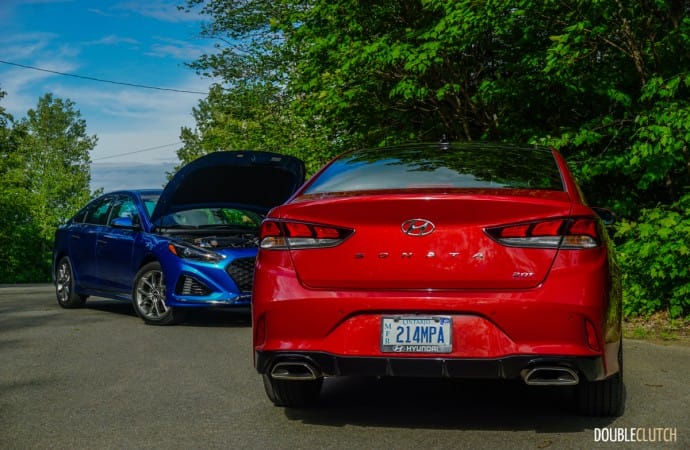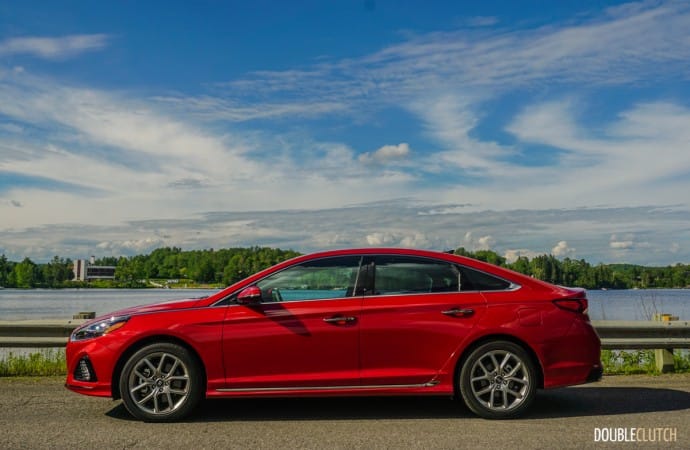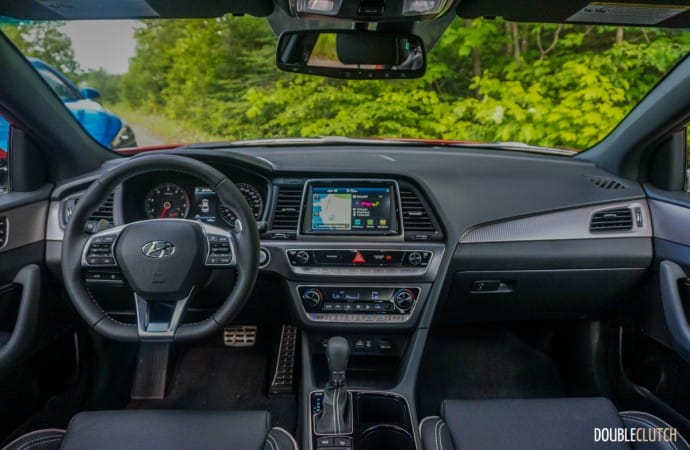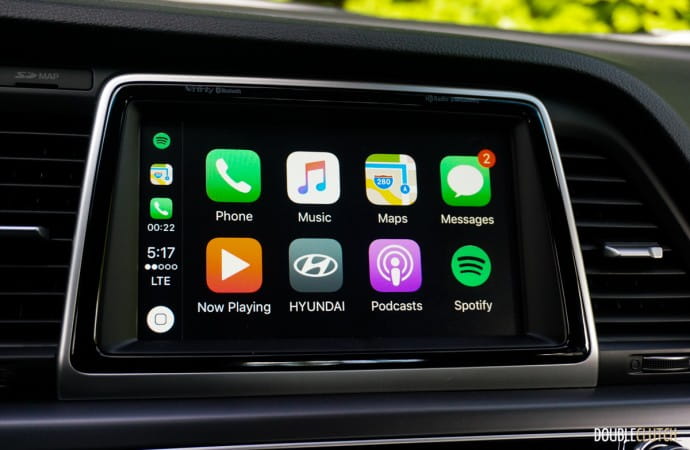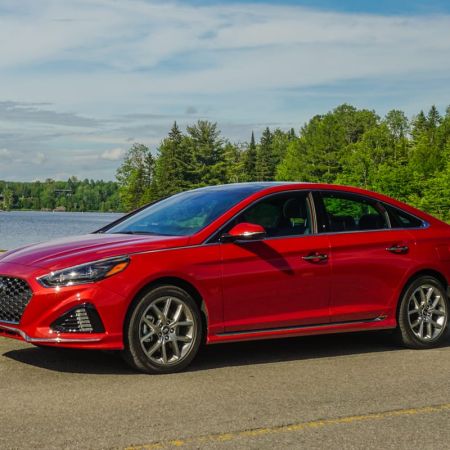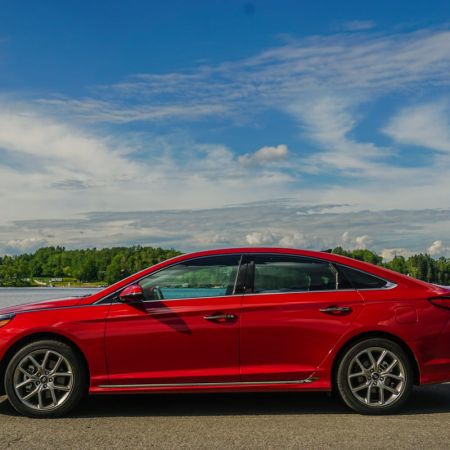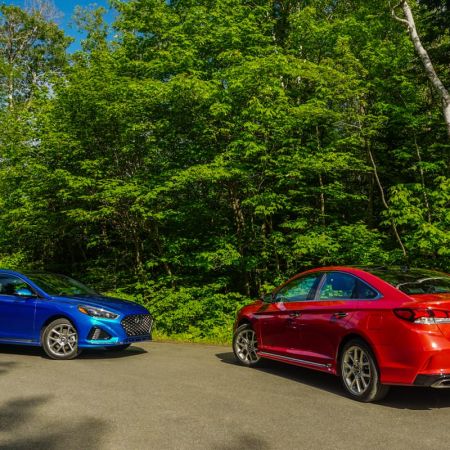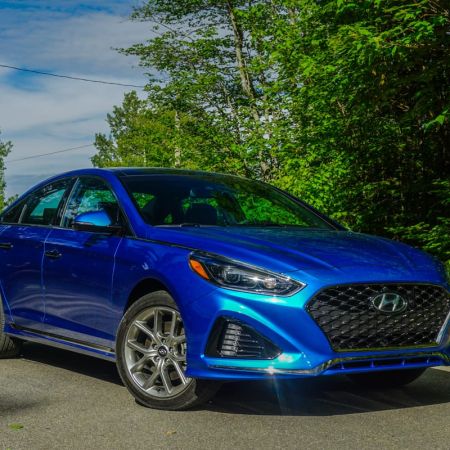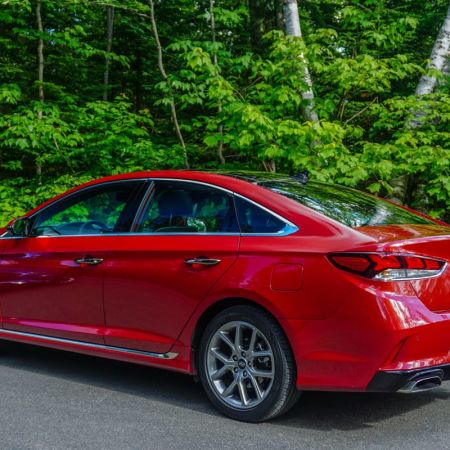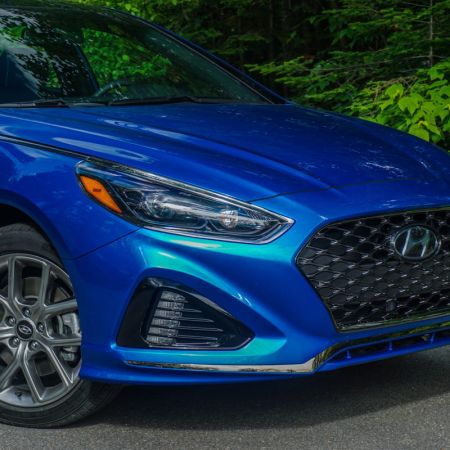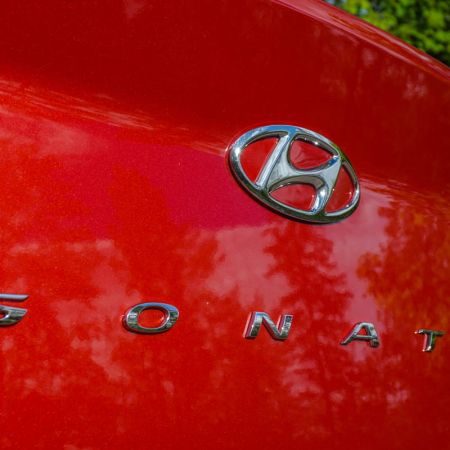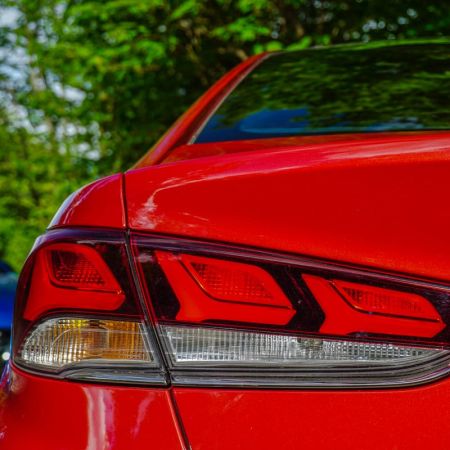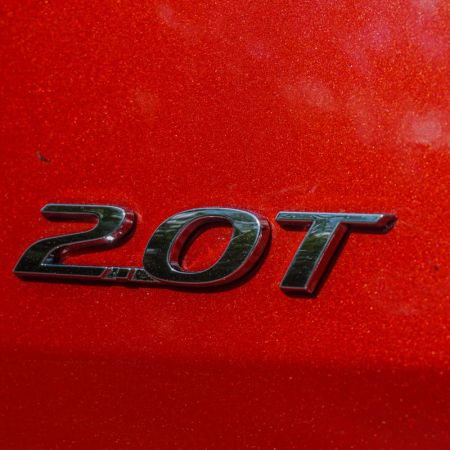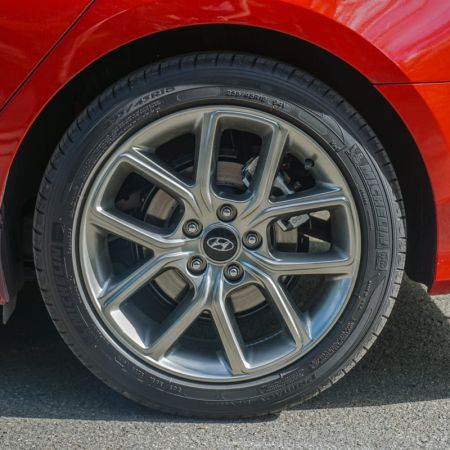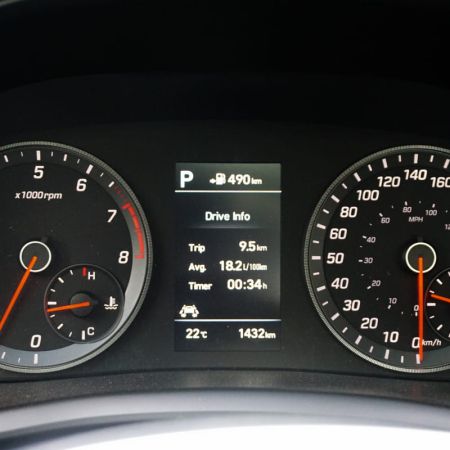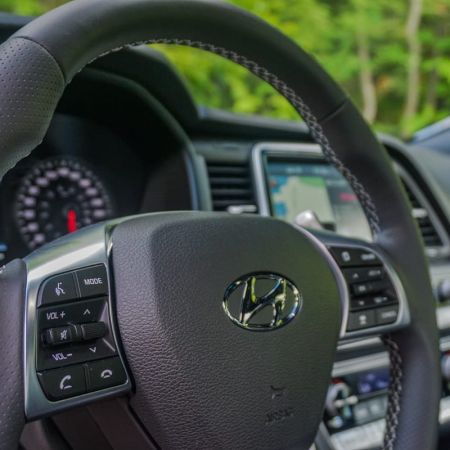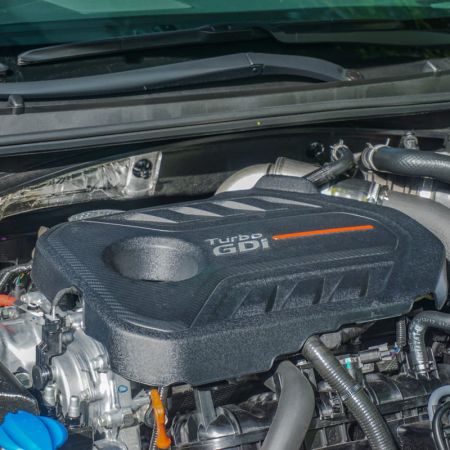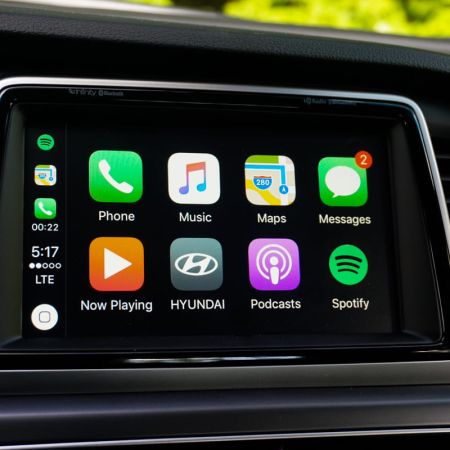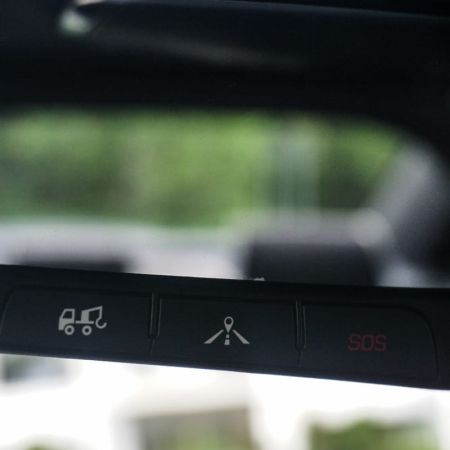ESTÉREL, QUÉBEC – The midsize sedan segment is one that once sat at the forefront of the automotive industry. However, with more and more Canadians families gravitating to the compact crossover for the added practicality and all-wheel-drive, the sedan is slowly going the way of the minivan – deep into “uncool” territory. Automakers are out to change that this year, with model year 2018 seeing full redesigns of two major players, the Toyota Camry and the Honda Accord. Hyundai’s entry, the Sonata saw a full overhaul for the 2015 model year, but has been significantly refreshed as well. We were able to take a quick spin in a loaded 2018 Hyundai Sonata 2.0T prior to its arrival into the market.
The Sonata’s powertrains are largely carried over, with the only major update here being the transmission. All models except the 2.0T Sport get a 2.4L direct-injected inline four-cylinder, offering 185 horsepower at 6,000RPM and 178 lb-ft. of torque at 4,000RPM. A six-speed automatic is still standard, with manual shift mode. The upper trim 2.0T Sport gets a twin-scroll turbocharged and intercooled 2.0L turbocharged four, which offers 245 horsepower at 6,000RPM and 260 lb-ft., between 1,350 and 4,000RPM. This engine is mated to an all-new eight-speed automatic with SHIFTRONIC manual mode and paddle shifters.
When the current Sonata was introduced, the 2.0T went down in power from its original 270-hp number, but the engine mapping and tune was altered in order to minimize turbo lag and give the car more low-end grunt. It worked, because response from the new 2.0T is quite good and exhibits excellent engine response. There is still turbo lag, and unfortunately that’s the way of the future as more and more manufacturers are doing away with their V6 options in favour of boosted four-pots. The Sonata responds well at both city and highway speeds, with the eight-speed gearbox shifting quickly and efficiently.
There is a Drive Mode selector on the Sonata 2.0T Sport, which alters the car’s behaviour between “Eco”, “Normal” and “Sport” settings. Variables that are tweaked include the weight of the electric steering, transmission shift points, and throttle response. There is a new “Smart” mode that senses conditions and adapts the vehicle accordingly. The car does feel a little bit bogged down in “Eco”, but comes right alive when “Sport” is selected and hustles with minimal fuss. There It rides well too, thanks to the Mando Dual Flow Dampers both front and rear. The front suspension is a Macpherson strut with coil springs, and out back is a traditional multi-link setup with coils as well.
Ride with the equipped 18” alloys on the 2.0T is definitely harsh, and those looking for a softer feel may want to consider the GLS Limited on a 17” wheel and tire package. The Sonata’s steering is electrically assisted, and therefore is quite numb, but with the car set in “Sport” mode, it becomes heavier and there is a marginal amount of feel (though not the same kind as with a hydraulic setup). The Sonata is a fun car to push through the odd curvy road, but the main advantage to the 2.0T Sport comes in the way of straight-line acceleration.
The interior of the car is laid out very nicely, with ample room for front and rear passengers. Four average-sized adults will have no issues staying comfortable on longer trips with the Sonata, exactly as it should be for a competitive midsize sedan. Upper trim levels are equipped with a panoramic sunroof, which is somewhat of a rarity in the segment and does a wonderful job of brightening up the cabin. Fit and finish is also top notch, with contrast white stitching located on the seats and leather-wrapped steering wheel (flat-bottomed, to add!). Heated seats are standard, while upper trim levels get ventilated seats that are a godsend on those hot summer days.
Upping the technology significantly from the previous model, the new Sonata features a redesigned center stack with a standard 7” touchscreen as standard equipment, with Apple CarPlay and Android Auto compatibility. A slightly larger 8” screen is available on higher trims, along with a wireless charging pad. The 2018 Sonata will also receive the same BlueLink Telematics system as seen in the new Elantra GT (reviewed here), with mobile phone connectivity to control certain features along with checking vehicle diagnostics and automatic collision assistance and notification. Like the Elantra GT, this system will be available to buyers at no cost for the first five years
Fuel economy and pricing has not been released at the time of this writing, though it’s a fair assumption that combined economy will be in the 8L/100km range for the 2.4L and slightly higher for the 2.0T Sport. It should also start between $23,000 and $24,000, and trickle into the $33,000-$35,000 range for the GLS Limited and 2.0T Sport trims. The 2018 Hyundai Sonata offers a conservative yet elegant design both inside and out, along with competent powertrains and Hyundai’s great warranty program. This is a car that should stack up very well in the import wars against the new Camry, Accord, and existing Mazda6 (reviewed here).
First Drive: 2018 Hyundai Sonata 2.0T Gallery
See Also:

